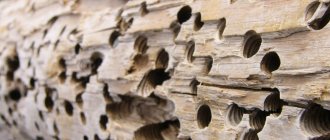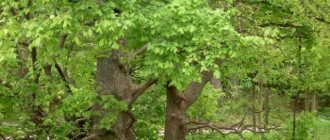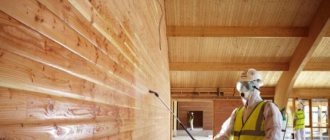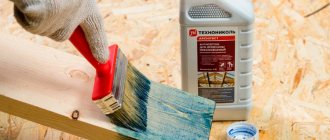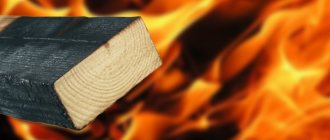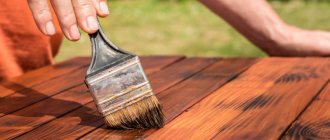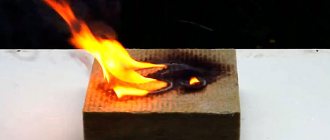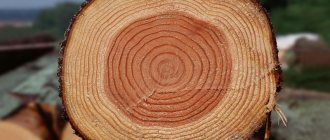Wood pests can cause enormous damage to a farm. With active reproduction and large numbers, in just 3-4 seasons they turn a strong log house into dust. Outbuildings, residential buildings, bridges and any other structures, the main part of which is wood, can be damaged by the jaws of insects.
If you do not start timely pest control, after a while you will become familiar with the consequences of their life activity.
Beetles penetrate houses and buildings in two ways:
- In the spring, when the female lays eggs.
- Through the use of previously infected wood, for example, during the construction of log houses.
Adult insects fly well, so they quickly spread throughout the area. Let's talk about how to get rid of wood pests in the house and on the property: what measures can be used?
The sooner traces of pests are detected in a tree, the greater the chance of getting rid of them with minimal damage.
Signs of pests in wood
There are more than 130 species of insects that attack wood.
You can understand that you are faced with pests by the following signs:
The presence of adult insects on the site, for example, longhorned beetles.
Small holes on wooden surfaces, next to which there are small mounds of rot.
The presence of visible labyrinth marks on the surface of logs, furniture or under the bark.
Rustling, clicking or other sounds that come from wooden walls, floors or ceilings. You can tell by the noise where exactly the beetle larva is located: if the noise comes during the daytime, it means it is located in the upper layers of the logs (under the bark); if at night, it means the larva is crawling in the depths of a beam or board.
The greatest danger is not from adult insects, but from larvae. They are the ones who destroy the tree by making passages in it.
Woodworm or bark beetle: how to distinguish?
Insects have approximately the same body size, but bark beetles have a more massive rectangular structure, while woodworms have an elongated cylindrical structure.
The larvae of bark beetles are 2 times larger than the larvae of wood beetles, as evidenced by numerous passages with a diameter of 3 mm.
Bark beetles mainly eat living wood, while wood gnawers prefer dead wood, penetrating into the very depths of a log or board.
Types of pests
Wood pests are distributed throughout the world. Let's look at the parasites that most often cause harm to the residents of our country.
Weevils
A distinctive feature of weevils is their elongated head with a small proboscis. Most insects of this species prefer living plants; the rotten weevil settles in treated wood.
It has a small dark brown body and rarely grows more than 3 mm. It is quite difficult to detect it at first glance.
Signs of the presence of rotten wood in a tree include:
Moves in a tree, under the bark.
Acceleration of wood decay processes. It acquires a dark color and a porous structure.
Weevils prefer damp wood with signs of fungus.
Grinders
The most widely used furniture grinder is the furniture grinder. Its size does not exceed 3-5 mm in length, and its body is dark brown in color.
You can understand that you are faced with a grinder by the following signs:
The presence of holes in wood with an inclined entrance. The larva enters the tree at an angle of approximately 45 degrees.
Small yellowish dust and granules near the holes.
The borer larva can live inside a tree for up to six months, after which it pupates and turns into an adult insect. The pest affects any type of wood, as well as products that contain cellulose. Most often it settles inside the house: in furniture and walls.
Oak barbel
This is a very large insect, whose body can reach 6.5-7 cm in length. The pest has a pair of long, stiff whiskers on its head. To lay eggs, the female longhorned beetle chooses strong tree trunks. Most often, oak and beech logs that have been cut down recently become victims of the pest.
Distinctive features of barbels are:
Presence of white thick larvae directly under the bark.
Deep passages on the surface of the wood.
Holes that go deep into the rock and have a diameter of up to 3 cm.
Oak longhorned beetle rarely causes major damage to buildings. The only danger comes from uncontrolled population growth.
Termites
They are found in the Far East, in the Krasnodar Territory and some regions of the Volga region. These are one of the most dangerous tree pests. They have an elongated body and resemble ants in appearance. However, unlike them, they have a pair of hard wings and strong jaws.
You can tell that termites live in your home by the following signs:
- The presence of passages in wood.
- The appearance of entrance holes and piles of rubbish next to them.
- Noise at any time of the day.
In just a couple of years of uncontrolled reproduction, termites can turn a fairly large building into dust.
Expert opinion
Kurdin Sergey Sergeevich
Important! Termites do not attack living plants. Their main target is dry wood, as well as any products that contain cellulose.
The presence of traces of the vital activity of any pest is a good reason to take measures to destroy it.
Wood-boring beetles (lictus)
Wood beetles have a long, elongated body, no more than 0.5 cm in size. Like most types of tree pests, adult wood beetles do not pose any particular danger. Insect larvae carry out destructive activities.
Females lay eggs in crevices and cracks of wood, or attach them to the surface of boards so that the hatched larvae gnaw their own passages into the wood. When densely populated by larvae, the surface layers of the tree are destroyed so much that most of it turns into dust.
Folk methods of struggle
Traditional methods are auxiliary in the fight against wood pests. With a large number of insects, it is almost impossible to get rid of them only with improvised means.
Copper sulfate
This is a fairly old method, which, in addition to killing insects, prevents the rapid destruction and rotting of wood.
Getting into the pores of the material, vitriol prevents moisture from penetrating inside.
Vitriol can change the color of wood, which is why take this feature into account during the processing process.
When choosing this method, consider the following features:
While working, use protective equipment: gloves, masks, goggles.
Do not apply the solution in residential areas as it may release toxic substances when heated.
The vitriol solution is suitable for treating non-residential buildings, sheds, outbuildings, poles, etc.
Flax, teak or tung oil
Most often, linseed oil is used for protection, since it has a lower cost. The oil strengthens the structure of the tree, protects against moisture penetration, and also clogs the pores, preventing the penetration of oxygen and disrupting the breathing process of the larvae.
When processing with oils, you should remember the following features:
- The oil takes a very long time to dry and be absorbed, so it is not possible to use wooden surfaces immediately after treatment.
- In order for the oil to be well absorbed into the pores and penetrate as deeply as possible, it must be warmed well before application.
- To achieve the best result, apply it with a brush in 3-4 layers.
The oil film is short-lived, so the treatment will have to be repeated 1-2 times a year.
Effective means
The method of treating wood against insects will depend on whether pests have already infested it, or whether these are preventive measures.
Lumber in production is protected as follows:
- traditional impregnation with antiseptics;
- autoclave method - boards are placed in special chambers and treated with antiseptics under high pressure (100 bar);
- dry hot steam is used;
- heat treatment – heating to +1400C without oxygen;
Treatment
If insects are found in wood, you can use the following types of treatment against them:
- If there are a large number of pests, and the wooden part of the structure cannot be changed, injection is carried out. Deep holes of small diameter are drilled in the tree at an equal distance from each other (10-15 cm), into which an insecticide solution is poured using a syringe.
- The insecticide can be injected into existing holes gnawed by insects, which are then closed with a plug made from a mixture of bread crumb and poison. In this case, it is necessary to process all or at least the maximum possible number of moves.
- Microwave treatment. Some craftsmen suggest building a radiation apparatus yourself from a household microwave. However, this can be dangerous. For such a procedure, it is worth inviting a specialized pest control service. Heating wood from the inside to +650C kills insects at all stages of development (adults, larvae, eggs).
- Also effective is spraying phosphine gas, which kills all insects.
- Tapping. It is believed that vibrations cause the liquid, of which 85% of the larva’s body consists, to rupture its leathery shell, causing death. The blows are applied evenly with a mallet or hammer, placing a wooden block as a buffer between the tool and the surface of the wall.
Traditional methods of control suggest using available liquids as insecticides:
- a mixture of turpentine, paraffin and creolin in a ratio of 10:5:3;
- solution of naphthalene in gasoline (1:10);
- impregnation with sodium fluoride solution (250 g per bucket of water);
- or a supersaturated saline solution.
The following antiseptic impregnations have proven themselves to be effective:
- Neomid Antizhuk 100;
- Master Good Stopbug;
- Belinka Belotsid.
Smoke bombs
Smoke bombs are quite effective insecticides.
They affect both adult insects and larvae. However, they have virtually no effect on pest eggs. The principle of operation of the checker is as simple as possible: you light the fuse, thick smoke is released, which settles on surfaces and fills the cracks.
When choosing a smoke bomb, it is very important to pay attention to the type of toxic substance used:
- Sulfur and its compounds . Checkers of this type suppress the proliferation of fungi and mold, but are ineffective against bark beetle larvae, which are found in deep layers of material.
- Hexochlorane . A poisonous substance of this type has a paralyzing effect on the insect’s nervous system. It perfectly fights parasites at any stage of their life cycle. However, hexochlorane bombs are also harmful to humans. Their use is permissible only in non-residential premises.
- Urea clathrate didecyldimethylammonium bromide . Suitable for processing pits, wooden cellars, sheds, vegetable storage. The insecticide settles on the surface of the wood, forming a thin film. Effective against adult insects.
It is best to treat premises using smoke bombs in spring or autumn. It is important to carefully study the instructions for use.
As an example, you can use the following checkers: Samuro, Climate, City, Vulcan, etc.
Drillers
Borers or drill beetles got their name for a reason. Females lay eggs in fallen trees, stumps and unsanded logs. A week later, larvae emerge and literally drill passages several centimeters into the material.
Borers are dangerous technical pests that render wood unusable (mainly spruce and other conifers).
Other chemicals
It is best to combat pests comprehensively. To do this, you can use checkers, folk remedies and the chemicals listed below.
Confidor Extra
Long lasting insecticide. The effect of the treatment lasts for 15-30 days. The drug begins to work immediately after application.
The product is a contact product and has the greatest effect on adults.
Clipper
Initially, the drug was used to treat only garden and agricultural crops. That is why there are no instructions on the packaging for treatment against the bark beetle.
Apply the product to buildings using a spray bottle in one layer. The drug is effective against insect larvae, adults and even eggs.
The substance Bifethrin contained in the liquid penetrates well into the deep layers of wood.
Antibug
This is an antiseptic that can be used to treat wooden surfaces both indoors and outdoors, including furniture.
The substances that make up the solution bind to the molecules of the wood and penetrate deeply into the structure. In this case, both larvae and adult beetles, as well as their eggs, are destroyed. The protection period when treated with Antizhuk reaches 20 years.
Xilix gel (Xilix gel)
Preparation for professional treatment of wooden surfaces. The product has the appearance of a white gel and is completely ready for use. The drug is effective against many pests: pine beetles, borers, bark beetles, etc.
It also protects materials from the effects of fungus and mold. The drug can be used to prevent infection during the construction stage of structures.
Suitable for use indoors, outdoors, and in rooms with high humidity, such as baths. The validity period of Xilix gel reaches 10 years.
Termidor SC Termiticide
An imported product used to control termites and carpenter ants.
The product has a slow effect on insects, due to which it quickly spreads throughout the colony, causing its death.
The concentrate has a fairly high cost, but at the same time it has maximum effect and long-term protection of housing.
Snow Insa
A professional product that is often used by workers in the woodworking industry.
The solution has a complex effect on wood: it protects against fungi and mold, destroys pests, and prevents their re-infestation.
The product is safe for humans, due to which it can be used in residential buildings: in houses, apartments, and dachas.
Dr.Klaus for bark beetle
A Russian preparation that is used to treat any wooden surfaces. The product is effective against beetle larvae and adults. The chemical is safe for humans and is completely ready for use.
When choosing chemicals for pest control, pay attention to the scope of their application: indoors or outdoors. Also read the instructions carefully.
The treatment should be carried out using personal protective equipment: masks, gloves, goggles. Please note that treatment with some products must be repeated annually.
Why do beetles appear in a wooden house, bathhouse or log house?
The most common cause of wood pests is the use of low-quality contaminated material during the construction process. Damage by beetles can occur both on a still growing tree and in a warehouse when storing logs and lumber.
Another source is non-compliance with the rules for the operation of wooden buildings. High humidity and lack of ventilation lead to the formation of mold and mildew. The latter are an excellent breeding ground and favorable environment for tree pests.
Question answer
How to get rid of bark beetle in a house without harming the residents?
To combat bark beetles in your home, choose professional insecticides designed for this purpose. If there are too many pests, you should contact a specialized service.
Can pests develop immunity to the chemicals used?
If the instructions for use are not followed, pests may develop resistance to certain substances. As a result, a new generation of parasites will be resistant to previously used chemicals.
What is better to use to control wood pests: domestic or imported chemicals?
You can take funds from any trusted manufacturers. The most important thing is to pay attention to the scope of their application, application features and composition.
Can bark beetles move from garden trees into the house?
Some types of pests attack both treated wood and living plants. Thus, this can happen in any area.
If our neighbors have bark beetles, but not in our house, is it necessary to carry out prevention?
Prevention against wood pests is necessary in any case, even if neither you nor your neighbors have beetles.
What do we recommend?
Antiseptics, impregnations and other means of protecting wood from pests can be selected here. You can get professional advice on these antiseptic compounds from the honored worker in the field of wood protection from pests: Galina Nikolaevna Zelentsova by phone.
If you have made a choice in favor of Neomid brand protective equipment, then you can buy them at retail for pickup from the city of Balashikha, here - Contacts.
place a small wholesale order of effective wood protection products with delivery by calling +7 (926) 198-06-33; ;.
